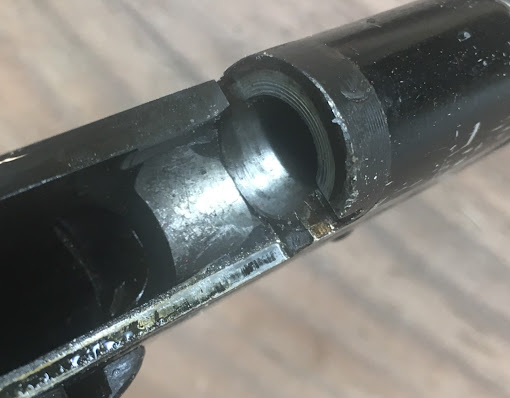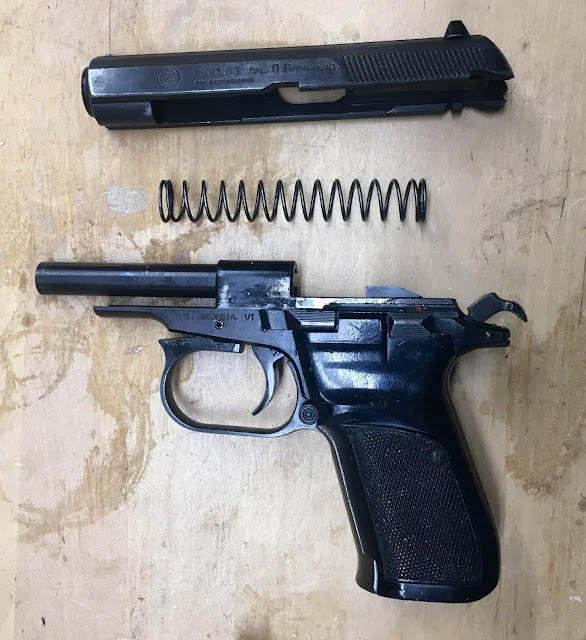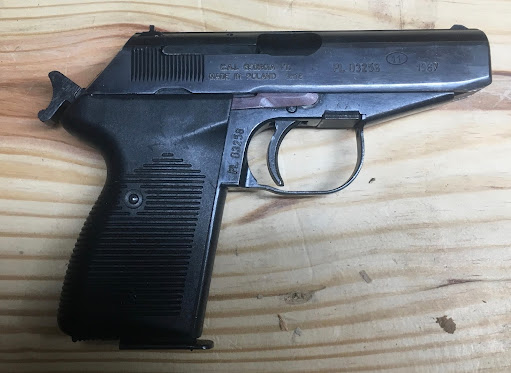Several weeks ago I ordered a CZ-70 in 7.62 Browning, aka .32acp, from Classic Firearms and had it shipped to my local FFL I paid the extra $20 for a hand-selected example, based on my previous dealings with Classic, and assuming it would be in as good condition as the FEG 7.62 and the CZ 83 I wrote about earlier. That, it turned out, was an incorrect assumption.
The gun that arrived was pitted and covered in rust. It was so rusted and gummed up that I couldn't even depress the magazine release, which it why you see it with the slide back in the above photo. My hand were covered in rust, as was the bag it arrived in. I took it home and sprayed it with plenty of my homemade Ed's Red to displace moisture and halt the rusting, and sent a friendly reply to Classic in response to their "how did we do?" email.
That was a week ago. Several days later, having heard nothing, I went to work on the gun. The first step was try try and disassemble it. I began by removing the plastic grips and setting them aside. Using a brass punch and a hammer I managed to depress the magazine release, but the magazine still didn't want to come out. Using a rag and a pair of pliers I pulled it, and- no surprise- it was covered in rust, as was the inside of the frame.
Again using the hammer and punch I managed to depress the slide release, and completed the basic field stripping of the gun. Not having a good disassembly manual or exploded diagram I stopped there and set everything to soak in more Ed's Red.
Over the next two days I went at the gun with solvents, #0000 steel wool, brass wool, stainless steel and bronze brushes, and 500 grit paper for rust inside the slide. I also cleaned the grips and gave them a quick buffing on a rag wheel.
One of the most difficult parts was freeing up the firing pin, which was frozen solid. I seemed to be jammed with a mixture of heavily oxidized grease or perhaps cosmoline, and a fine grey powder- no idea what that was. I didn't want to completely disassemble the slide, so for now I flushed the firing pin with solvent, through the opening for the firing pin lock, until the pin moved freely, and then i filled the are with light oil for now. I imagine I'll eventually want to actually disassemble that area. There's a drive pin visible in this photo (upper left) that I think holds the firing pin and spring in place.
After several hours of work I managed to get rid of all the visible rust, but not the pitting, of course. That'll have to wait for some long boring winter nights when I'll feel like completely disassembling it and draw filing, sanding, buffing, and rebluing it. For now, though, I've arrested and removed the rust. It looks safe to shoot, with no obvious cracks in the frame, but I'm going to wait until I can do a really thorough teardown.
UPDATE: Still working on the gun. I haven't fired it yet, as I'm not entirely sure if it's safe; there may be cracks in the frame.
And a month after my email, I still have not received a reply from Classic Firearms.

















































